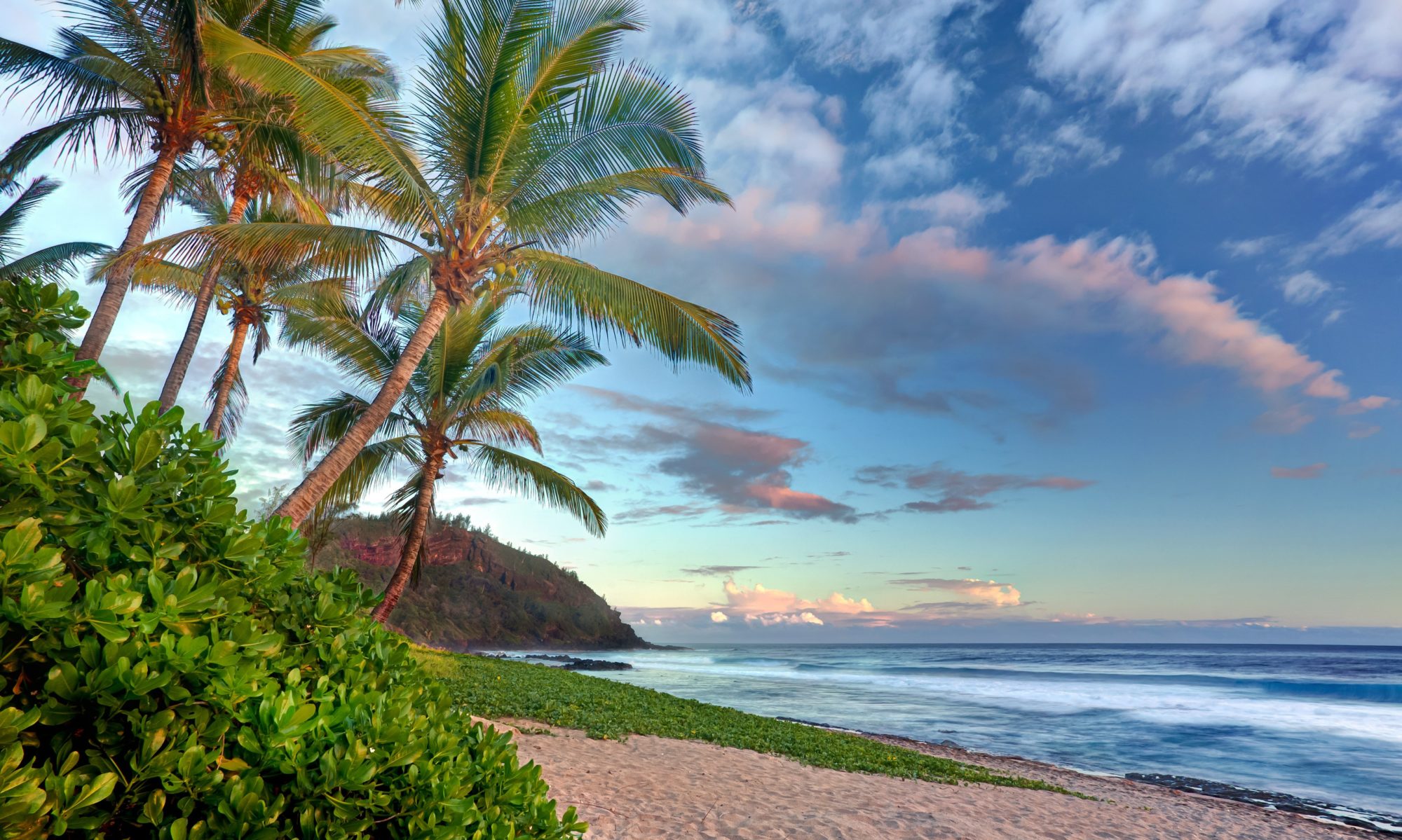 Situation
Situation
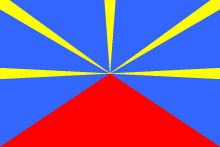 Situated in the Indian Ocean, 800km east of Madagascar, Reunion Island which has a tropical climate, constitute with Mauritius and Rodrigues the Mascarenes Archipelagos. Its environment, tropical forests, volcanic mountains and sugar cane plantations make it a colourful country. The visitors are not mistaken: the tourism sector is growing for several years.
Situated in the Indian Ocean, 800km east of Madagascar, Reunion Island which has a tropical climate, constitute with Mauritius and Rodrigues the Mascarenes Archipelagos. Its environment, tropical forests, volcanic mountains and sugar cane plantations make it a colourful country. The visitors are not mistaken: the tourism sector is growing for several years.
The island has many assets, such as the ethnic multiplicity of its population (its history is a permanent mixing of people), its fauna and flora (Coconut trees, Vanilla plants and mango trees, but also of fragrant plants like the Vetiver) or his pivot location in the southwest of the Indian Ocean. Being of French origin since 1638, Reunion Island became a French department in 1946.
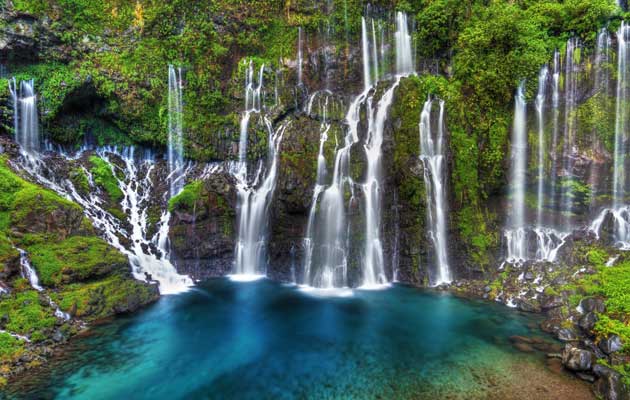
Paradise of sensations, uncommon activities, privileged destination for lovers of snow sports, Reunion Island is the seductive cocktail of the hit parade: sun, sea, mountains and coconut trees! The island possesses unique qualities. Nowhere do we encounter this mixture of races and religions under the same label ‘Creole’. In Martinique, Cuba and Brazil, we still distinguish the origin, but not here, for the moment at least.
Reunion Island has an exceptional environment, as long as we can exert an attractive and profitable business that allows you personal free time….. But in the private sector, it is not the case.
Mentalities, facing the concept of ‘all works deserve to be remunerated’ are imbued with a strong sense of ‘assistant’ that gradually destroys all sense of initiative, dignity, ambition and… the future. Utilisation of structural funds, grants often distributed in a very ‘selective’ way, since 3 decades, have not generated real wealth as in Ireland and elsewhere. Property speculation is high. Many indices predict that the coming years might be very ‘delicate’.
 Geography
Geography
Area: 2,512 km2
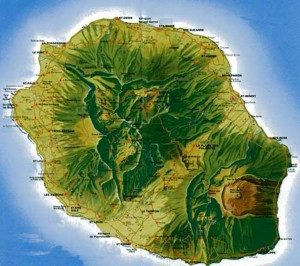 The island is surrounded by 210 kilometres of coastline, mostly inhospitable, except the 25 kilometres of white coral sand beach and the 14 km of black sand, situated in the West. It offers almost no natural shelter for navigation, except the Bay of Saint-Paul.
The island is surrounded by 210 kilometres of coastline, mostly inhospitable, except the 25 kilometres of white coral sand beach and the 14 km of black sand, situated in the West. It offers almost no natural shelter for navigation, except the Bay of Saint-Paul.
It consists of two volcanic groups: in the North-West area, there is the Piton des Neiges (3,069 metres) which dominates and encircle itself by the three cirques of Cilaos, Salazie and Mafate which enclose itself. The latter, which inhabits 700 people, is inaccessible by car. They are the result of the collapse and erosion of the slopes of the ancient volcano. On the South-East, the Piton de la Fournaise (2,631m) is an active Hawaiian-type volcano. This is a particularly active volcano which erupts about three times a year and which always serves as a spectacle appreciated by the islanders and the tourists.
The layout of the island, subject to heavy rainfall during the wet season of the tropical climate (between 2600 to 4000mm in the East from November to April), has resulted in the creation of countless “ravines” or “rivers” that descend from the heights alternating steep gorges and calmer areas, cluttered with rocks and sometimes with waterfalls and “basins”.
The erosion in Reunion Island is one of the highest recorded in the world, it is irreversible and it structures the landscapes and the typical terrain of the Island. The eastern coast of the island, called “Côte au vent” is very watered and where several rivers, such as the Mât, the Marsouins and the L’Est, are perennial, and are contrasted with the west coast, “Sous le vent” where the lands are dry. The vegetation of Reunion Island, which has many endemic species, varies according to altitude and the climate: tropical forest or dry savannah, sugarcane plantations or fruit trees. Even if the forest serves as habitat to extraordinary tree fern, it is also rich in colourful birds.
 Politics
Politics
French overseas department with:
President: Emmanuel Macron (Since May 2017)
Prime Minister: Édouard Philippe (Since March 2017)
Institutions
Reunion Island, being a French department, is placed under the authority of a prefect appointed by the government. The Island, which became a French Department since the law of 19th March 1946, has a Regional Council and a General Council. All national laws are applicable therein.
Only certain adjustments have been predicted by the law. Reunion Island consists of 24 towns and 47 townships. It is represented by 5 deputies and 3 senators at the Parliament and an adviser at the Economic and Social Council. The prefecture is located in Saint-Denis and the 3 sub-prefectures in Saint-Pierre, Saint-Paul and Saint-Benoît. As a French overseas department, Reunion Island forms part of the European Union in which it is an outermost region; as such, it benefits from “special measures” which adapt the adapt to the community law taking into consideration the special characteristics and constraints of these regions.
The department is a local authority administered by the departmental council where the president represents the executive.
The departmental council is composed of all departmental advisers who form the Assembly which is the deliberative body: the departmental council manage the activities of the department by taking its own decisions.
It is situated at the “Hôtel du Département (2, La Source Street, Saint-Denis).
It meets at least once in a quarter at the initiative of its President or at the request of the standing committee or by a third of its members. The departmental advisors, met in public session, have to vote on all the reports presented by the President, and previously studies by specialised commissions.
The Assembly deals with the most important issues and delegate certain affairs to the standing committee.
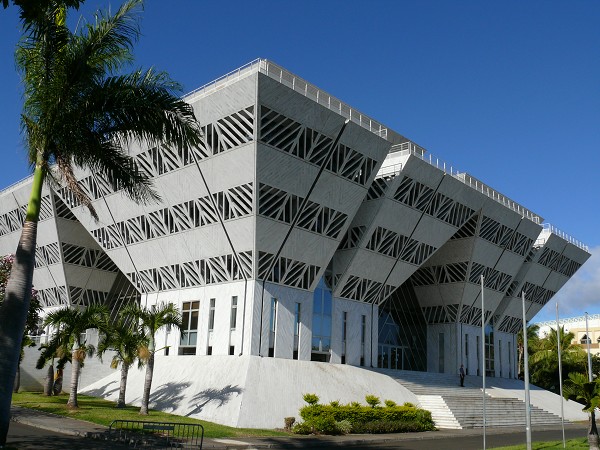
Organisation
The President is solely responsible for the administration, but may be assisted in his task by the Vice-Presidents to whom he delegates, under his supervision and responsibility, a part of his functions.
The Reunion Island region is the public institution which hosts the Regional Council of the Reunion Island. The latter is composed of the local representatives. The CCEE and the CESER, being the advisory boards, should also need to be mentioned.
On the 20th February 1983, it was with the Guadeloupe, the Martinique and the French Guiana, one of the first four regional councils elected by the universal suffrage in France.
It is chaired by Didier Robert since the 2010 elections.
The plenary assembly of the 18th December 2015 saw the re-election of Didier Robert at the head of the Reunion Island Region. He has also proceed with the election of the members of the Standing Committee.
 Climate
Climate
The climate of Reunion Island, of tropical type, is marked by the influence if the trade winds. It changes significantly depending on the location and the surface. The average temperatures range from 20 to 26°C on the coast and from 8 to 14°C on the interior plateau varying as per prevailing seasons. It is noted that the night frosts can be observed on the heights above 2,000 m. The cyclonic climate is from December to April during the hot season.
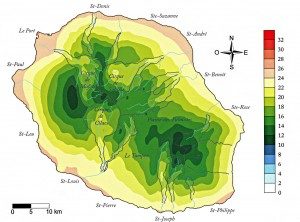
To forecast: Light clothes and a sweater for ‘winter’ evenings on the coastal area. On high altitude, sweater, windbreaker and shoes which are suitable for walking.
The best time to visit Reunion Island is at the end of the summer season which is between April and May or late winter between September and November in order to take advantage of the pleasant temperatures.
When Leaving
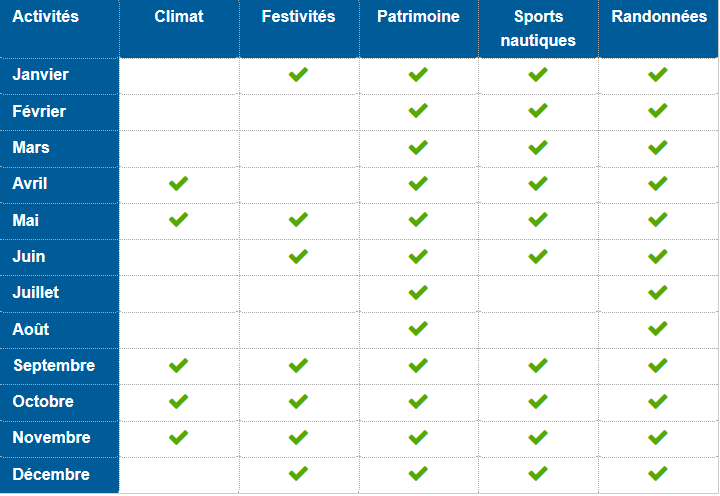
 Time zone
Time zone
+ 2 hours in summer and + 3 hours in winter compared to London (UTC + 4 hours).
 Population
Population
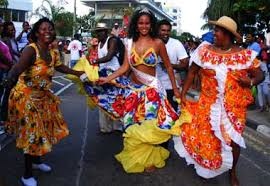 The population of Reunion Island, with 843,617 inhabitants in 2015 and with a density of 334.6 inhabitants / Km², is the largest of all overseas territories. It should count 1.061 million inhabitants by 2040. Three and a half centuries
The population of Reunion Island, with 843,617 inhabitants in 2015 and with a density of 334.6 inhabitants / Km², is the largest of all overseas territories. It should count 1.061 million inhabitants by 2040. Three and a half centuries
have transformed the desert island.
With time, the islanders were constituted of a mixed society, in which six ethnic groups can still be distinguished.
Its population therefore consists of:
-The population of African and Malagasy origin, commonly known as the ‘Cafre’, essentially after the slavery period had its origins in Mozambique, Guinea and Senegal. It is strongly mixed with the European strain and is 35 % of the total.
-The white population, being of European origin represents 25 % of the whole. It is appropriate to add about 5 % of the metropolitans (the “Zoreils”) living on the island.
-The population of Indian Origin and Hindu religion, the “Malbars”, consists of the descendants of the “engaged” workers who arrived from 1848 to 1882 in lots of ten thousands from the eastern coast of India (Coromandel) and from Malabar Coast. It Represents 25% of the current residents.
-The Chinese, who left at about the same period of time from the Canton region, were scattered throughout the Indian Ocean. They are currently estimated at 4% of the total inhabitants of Reunion Island.
-The Indo-Muslim from Gujerat (North of Mumbai), came later, in the late nineteenth and early twentieth century were also strain. Their descendants, the “Zarabs” constitute about 3 % of the population.
-Natives of the Mayotte and the Comoros, but also the descendants of the engaged workers from other countries around the Indian Ocean, that have been brought up during the last century, complete the human palette.
-The Reunion Island has a developed urban area with 8 cities of over 30,000 inhabitants: Saint-Denis, the capital (146,825 inhabitants), Saint-Paul (105 439 inhabitants), Saint-Pierre (81,244 inhabitants), Le Tampon (75,794 inhabitants), Saint-Louis (53,071 inhabitants), Saint-André (55,458 inhabitants), Saint-Benoît (35,971 inhabitants) and Saint-Joseph (36,869 inhabitants). (Census of the legal population of 2011).
Urbanization rate (number of people living in a city of more than 2,000 inhabitants per 100 inhabitants): 98.2% (75% in France).
Reunion’s population is growing at a steady pace (+ 1.2 % per year between 2006 and 2011).
The growth is due to migration flows but mainly to natural increase (excess of births over deaths): the birth rate reached 16.9 % (the birth rate is around 12.5 % in France) while the rate of mortality stood at 4.8 %. If the recent migration trends continues, the net migration rate would be slightly negative. By 2025, Reunion Island might consist of between 900,000 and 1,061,000 in 2040.
The younger ones, who are lesser than 20 years, would consist of a bit more than one Islander over four. The number of people aged over 60 is expected to increase at the same time to 185 000 people, and they will be three times as many as today. As compared to the youngest, they will represent more than a quarter of the population, against 11% today. For the older ages, the massive increase corresponds to the generations born in the 60s. By 2040, those of more than 80 years would be 63,000 that is 4.5 times more than today. These people, who require more care, would represent 6% of the population.
 Languages
Languages
French and Creole.
 Religions
Religions
Catholic, Hindu, Tamil, Muslim, Buddhism
 Legal Celebrations
Legal Celebrations
Kaf: Abolition of Slavery
Public Holidays:
January 1:New Year’s Day 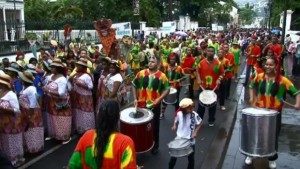
April 13: Good Friday
April 16: Easter Monday
May 1: Labor Day
May 8: 1945 Victory
May 24: Ascension
June 4: Whit Monday
July 14: National Day
August 15: Assumption
November 1: All Saints Day
November 11: Armistice
December 20: Abolition of slavery
December 25: Christmas
* Religious Holidays: based on religious calendar these festivals can be changed at the last minute.
**Other Religions: Some people you might want to meet, could form part of the religious minorities that is not common in the country where no public holiday or religious holiday as regards to their belief figure in the above list. For Safety reasons, please verify properly before taking any a business trip or travelling…
 History
History
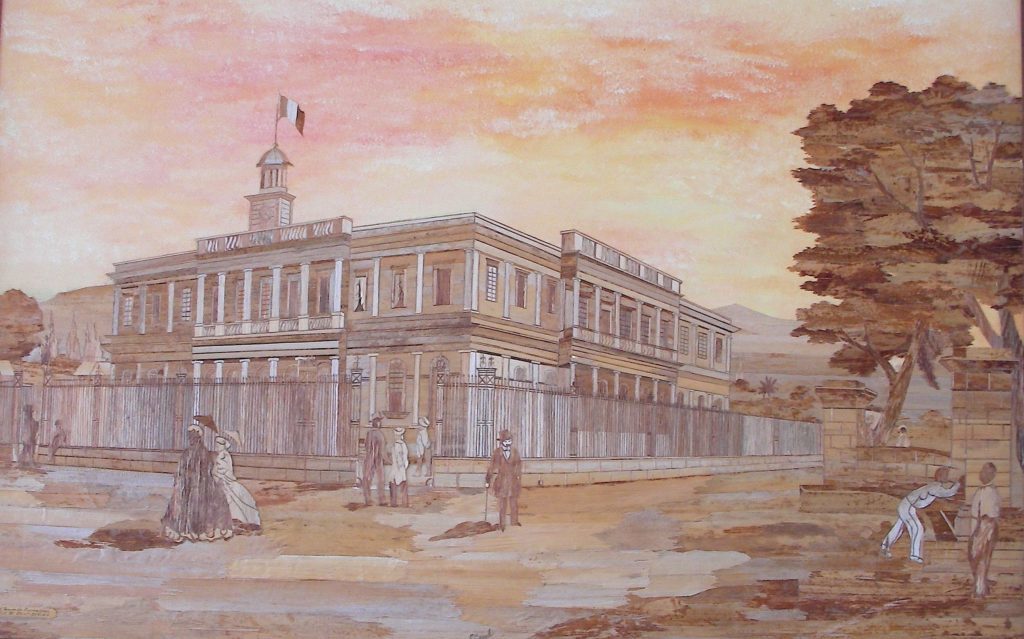
The stoty of the Reunion Island
1512: The Portuguese navigator Pedro Mascarenhas discovered the archipelago of the present islands of Reunion, Mauritius and Rodrigues.
1646: The banned French people are then deported to Reunion Island – then deserted – a dozen mutineers of their neighboring colony of Madagascar. A ship discovered them still alive and rather satisfied with their fate with their fate three years later, which has pushed the Crown of France to officially claim the island, which was then renamed as Bourbon.
1685: Populated by 260 settlers, Bourbon was a haven for pirates. The French East India Company decided to put an end to their illicit trade and take effective control of the island.
1715: The coffee, introduced by the French East India Company, was the main production of the island. The first cereal plants, spices and cotton are imported a few years later. These cultivations, which required hard work, were the source of trafficking of Reunion Island and Africans slaves.
1810: The British seized the island on which they introduced the sugar cane, which soon supplant other cultivations. Reunion (so named since the Revolution) is retroceded to France five years later. 1848: Following the abolition of slavery, the families of the wealthy planters import to the Island large contingents of contract workers, mainly of Indians. The golden age of trade and development of the island lasts until 1870. Thereafter, competition from Caribbean sugar cane, beet and the opening of the Suez Canal (which short- circuits the Reunion Island on the maritime routes) carry as many fatal blows to its economy.
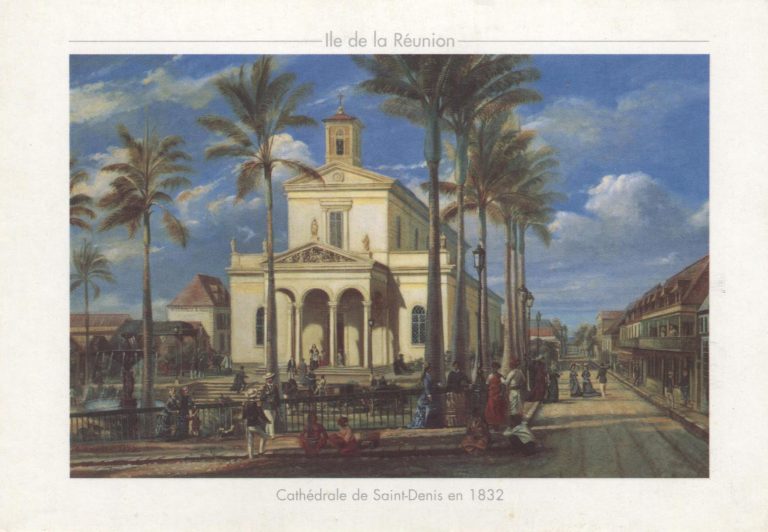
1914/1945: The sugar industry is experiencing a resurgence after the First World War. Brief respite: World War II imposed the island a strict blockade.
1946: The transformation from colony to overseas department (DOM) helped in the island’s economy. The Island gained a total equality with France in political and social terms and release itself from the dynamic that a colony must bring more to the city than its costs.
1997: Lava flows from the Piton de la Fournaise could be seen reaching the national highway near Sainte-Rose.
1987: The cyclone named Clotilde caused several million francs of damage on the Island.
1991: Anti-Governmental riots made 10 deaths in Saint-Denis. If the seizure of the issuers of a private TV channel – TV Free Dom – set tensions, these events reveal the discontent of a part of the population of the island which has one of the highest unemployed rates in France.
1998: The Piton de la Fournaise enters in its longest eruptive phases of its history. The wrath of the volcano fortunately made no victims.
2000: The law framework for the overseas departments (LOUM), which establishes in the overseas a « congress » with limited powers, includes new aid for employment in a department where the unemployment rate is 37%. The clause on the establishment of a second department in the south of the island desired by the leftist politicians, retired in extremis before the vote of the law.
2001: While Visiting Reunion Island, Prime Minister Lionel Jospin announced that the island will be divided into two departments the following year, but the loss of several important municipalities at the municipal countries against the left party contradicted his wish.
2002: The cyclone Diana caused serious damages on the Island while the Piton de la Fournaise pursued its lava flows.
2006: The epidemic of Chikungunya affected 150,000 people before experiencing a significant decline. The tourism sector had been badly affected.
2007: In April, the Piton de la Fournaise experienced a historic eruption during which the Dolomieu crater collapsed to 300m.
2008: The Island passed again through a natural disaster with the passage of the cyclone Gamède in February. Following the municipal elections, the four biggest cities fell to the left, including the capital Saint-Denis.
2011: The Island experienced a shark-crisis with a sharp increase in bouledog and tiger shark that swarm the Reunion coast due to environmental changes (Marine reserves, aquaculture farm, discharge of waste water, baiting the coast by divers, ceased commercialization…). The Island suffered 17 serious attacks between 2011 and 2015 including 7 fatal cases.
2015: Installation of 626 linear meters of anti-shark nets for 84,000 square meters at Boucan Canoe, ensuring secured water sports 320 days a year.
31 July 2015: “Éruption du Piton de la Fournaise du 31/07/2015 – 01/08/2015”
 Our sense
Our sense
being entered
